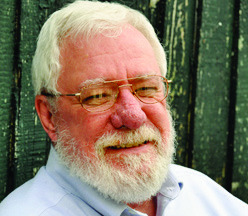Bradshaw
Longleaf pine, “yellow pine,” has been described as the most important timber tree in the southern United States. It certainly has been important in south Louisiana for more than a century, not only because fortunes were made from it, but because it helped create dozens of the places where we live.
In 1840, when we first began to harvest the pine in an important way, southwest Louisiana held 4,500 square miles of centuries-old trees that stretched north from Calcasieu Parish through Beauregard and Allen and east into parts of St. Landry, Rapides, and Natchitoches. An estimate made in 1880 suggested that pine forest held enough timber for more than four billion board feet of lumber. That’s a lot. It takes about 15,000 board feet of lumber to frame a 2,000-square-foot house.
It was good, versatile lumber, too. It could be used to build bridges, ships, and railroad cars, for flooring, furniture, and finish work in houses, and for all sorts of other purposes – when we could get the timber to the mills.
Before railroads came to south Louisiana in the 1880s, waterways were about the only way to get logs out of the woods. Timber was cut close to small streams and hauled to them by ox teams. But that was often as far as the logs could go until a good rain raised the water level. Sometimes the logs languished in these little creeks for months.

Bradshaw
Weather reports in the Lake Charles newspapers were as often about the state of the streams as about climate conditions. For example, the Lake Charles Commercial reported about a damaging hail storm in June 1893, noting the harm done, but more particularly that the hard, all-day rain “was sufficient to swell the creeks and river, so as to enable the log men to run logs to market.”
On at least one occasion the Calcasieu River got too full and too swift. According to a Commercial account on January 5, 1884, “The heavy rains of [December 31] raised the creeks and brought out a great many logs, which jammed against the chain booms on the Hickory Branch and West Fork [of the Calcasieu], letting logs into the main river. The Steam Tug Alert was put to work stretching booms … but the current aided by the heavy north wind … broke the booms and the logs were adrift again. The Alert then went [downriver] and stretched [another] chain boom which … gave away. It is estimated that between 10,000 and 12,000 logs have gone down the river and will be a total loss.”
Episodes like this, or ones when everything was so dry that nothing could be floated, prompted lumbermen to begin thinking about railroads.
The Commercial reported in August 1881, “The mill owners and lumbermen … have at last realized … they can no longer absolutely depend upon the uncertain rises of the river for their supply of logs. The demand for lumber … has reached such proportions that our twelve sawmills are strained to their utmost capacity to fill one-half of the orders sent to them. Any interruption in the supply of logs is … a serious loss to them, and we are glad to see that serious steps are being taken by some of our citizens to prevent any such contingency in the future.”
One of those citizens was A. J. Perkins, who built one of the first narrow- gauge lines into the woods from the Calcasieu’s West Fork about 1881, and it wasn’t long before more substantial railroads began to come through the area, connecting sawmills and sprouting towns.
An early map of a line running from Shreveport to Lake Charles shows dozens of mill towns: Larosen, Keithville, Stonewall, Keatchie, Grand Cane, Longstreet, Oxford, Trent, Catuno, Benson, Pinewood, Rosepine, Ludington, De-Ridder, Bon Ami, Carson, Longville, Fulton, Gaytine, Bradley, Marion, Barnes Creek, Ramsay, Penoyer, Town Line, Camp Store, Old Town, Lockmoor, Lockport, and more.
Arthur Edward Stillwell built a railroad through Caddo, DeSoto, Sabine, Vernon, Beauregard, and Calcasieu parishes, and then across the Sabine River to a place named for himself, Port Arthur. His biggest backers came from Holland, and he named some of the communities along his railroad after them – including DeQuincy, DeRidder, and Zwolle.
Stillwell’s railroad and others like it were built to haul timber and support mills, but they also had a profound influence on settlement in southwest Louisiana. Because of them, people were no longer reliant on waterways as the only way of transportation; they could build homes and towns anywhere a railroad could go.
Some of those towns faded away when the mills that supported them closed, but others, especially those on mainline railroads, continue to prosper to this day – filled with homes and stores and bank accounts built with good yellow pine.
You can contact Jim Bradshaw at jimbradshaw4321@ gmail.com or P.O. Box 1121, Washington LA 70589.

